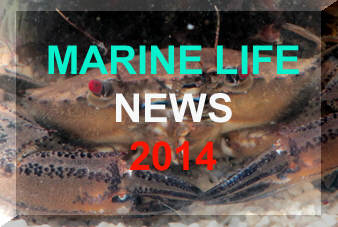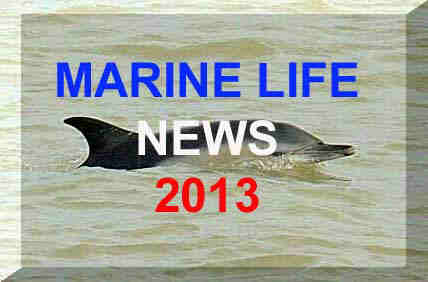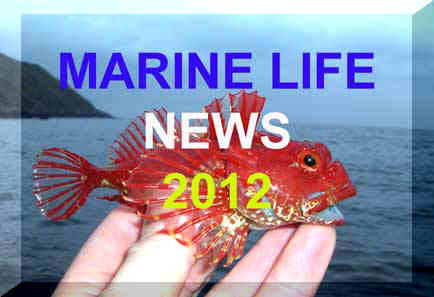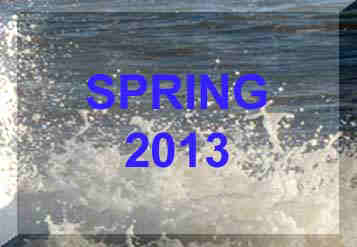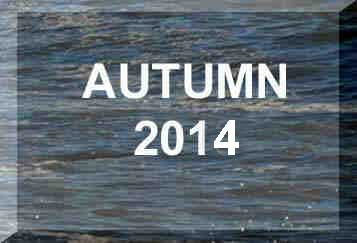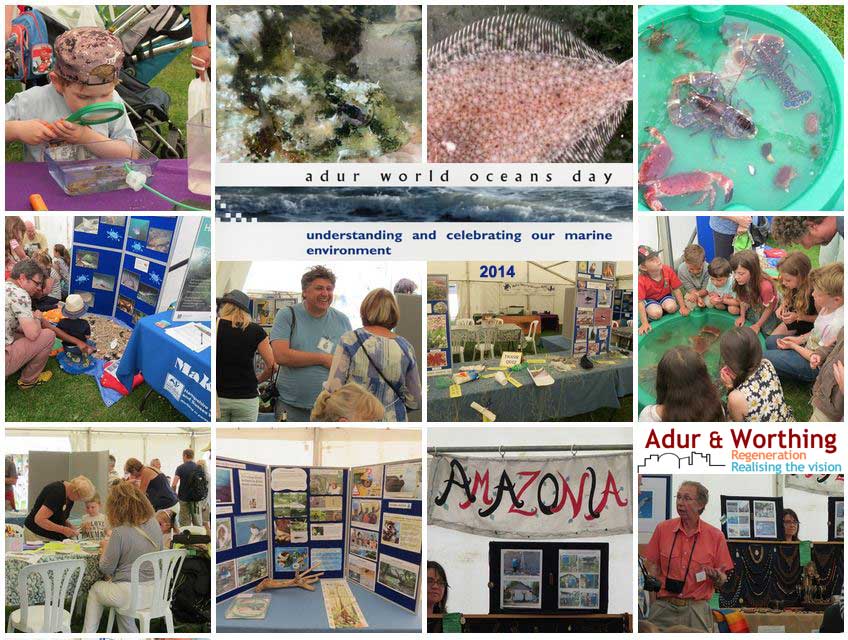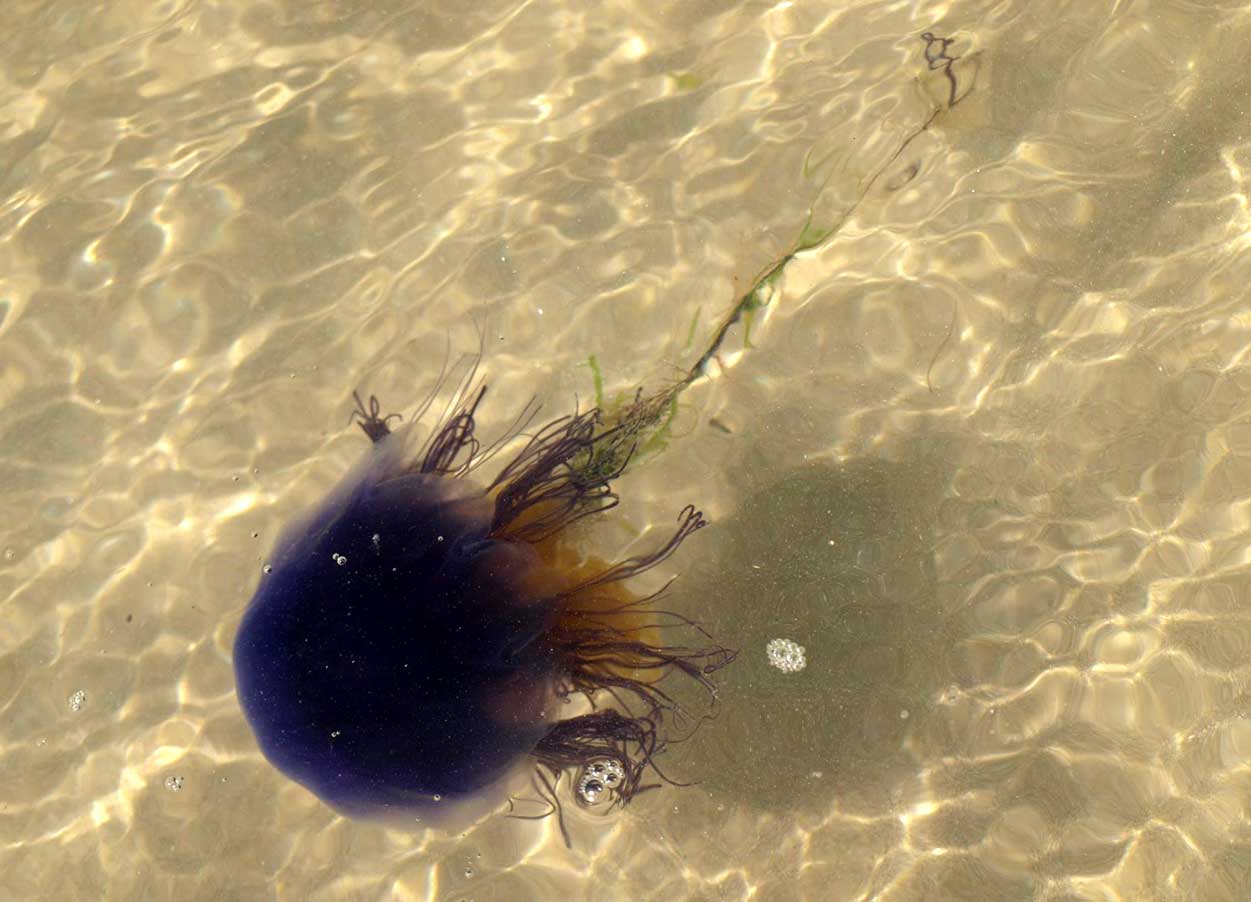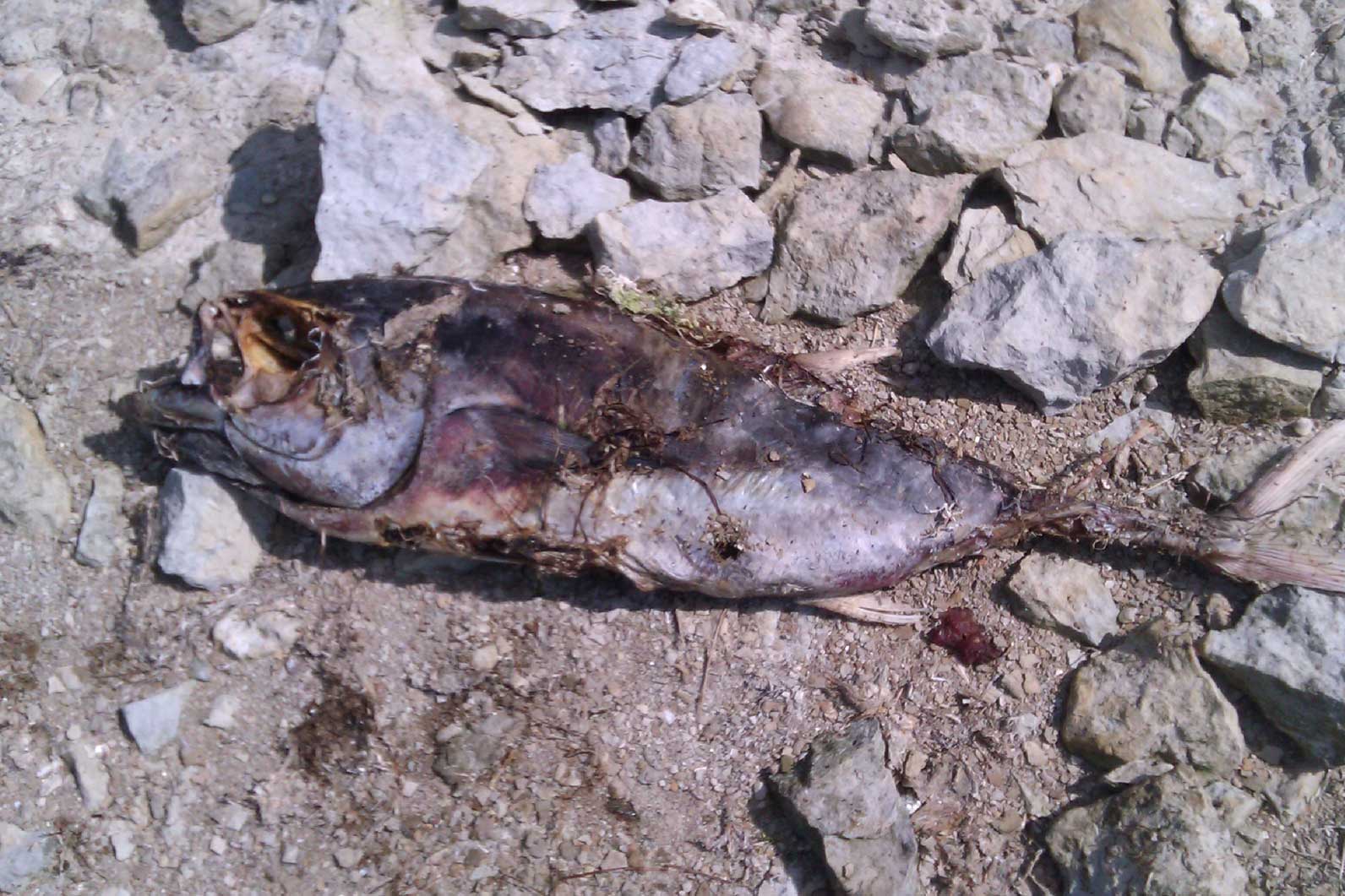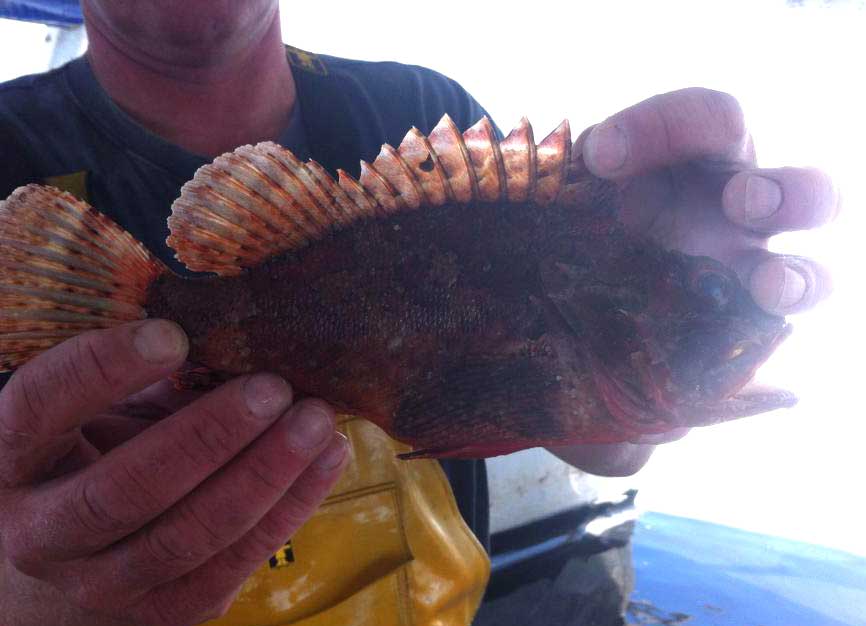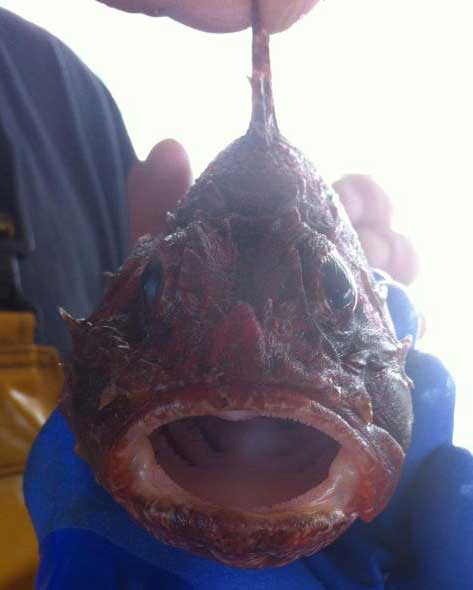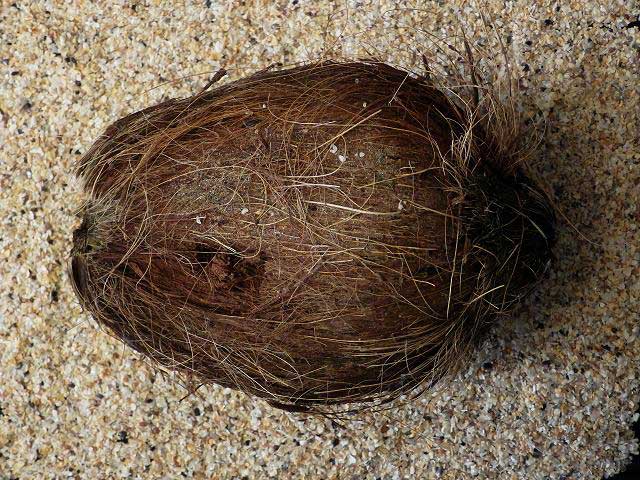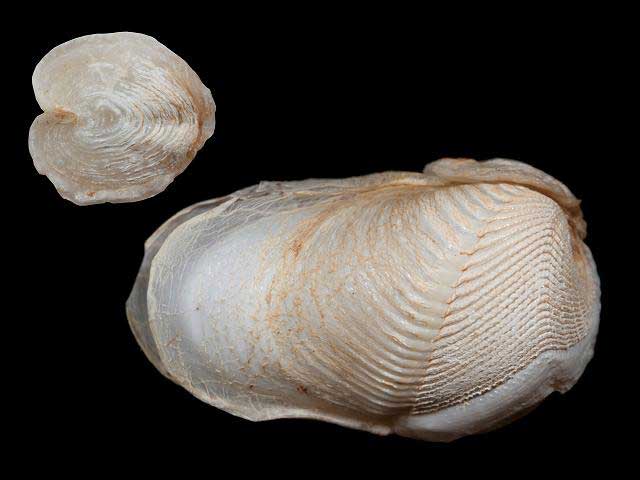LATEST
NEWS:
25
- 26 June 2014
A
juvenile male calf, but still massive, Humpback Whale, Megaptera
novaengliae, weighing 8 tonnes with
a length of 7 metres, was found dead floating close to shore at at Fishnish
on the Isle of Mull.
It was craned on to the shore for a post-mortem. Even at this size, it
was dependent on its mother for nutrition. This
was probably the first ever Humpback Whale washed up on Mull.
BMLSS
Cetacea
Late
June 2014
Large
numbers of Bluefire Jellyfish, Cyanea
lamarckii, were spotted on the falling
tide
at Padstow in north
Cornwall.
18
June 2014
One
of the more interesting characteristics of this very wet spring were the
numerous reports of very large jellyfish washed
up on the southern and western shores of Britain. Almost all of them were
the non-venomous Barrel Jellyfish, Rhizostoma
octopus. Reports were received from
all south-western coasts and many of them were seen in the sea and washed
up on the shore of Dorset.

Barrel
Jellyfish
Photograph
by Andreas Frangou
This
blue specimen was a typical sized specimen as others were reported the
size of dustbin lids. This was washed up at the Witterings,
West Sussex. The most usual colour of this jellyfish is a creamy wide umbrella
with trailing tentacles of cream and sometimes brownish-red.
BMLSS
Jellyfish
17
June 2014
A dead
and scavenged Tuna was found washed up in the Fleet, Dorset. The
fish was in too worn condition to identify it to species. Tuna
are an uncommon visitor in summer in the English Channel.
BMLSS
Tunnies
12
June 2014
A venomous
Red
Scorpion Fish, Scorpaena
scrofa,
was captured in pots off Plymouth. This benthic
southern species is only rarely recorded in British seas. It is the spines
on this bottom living predator that are venomous and in the Mediterranean
Sea and the Atlantic coast of Portugal it is a hazard to bathers.
16
May 2014
A great
day with friends from Coastwise
North Devon at Westward
Ho!
produced a special find: a little Sand
Sole,
Pegusa lascaris,
was caught in a push net at the edge
of the sea.
The
Sand
Sole,
Pegusa lascaris, was a particularly
interesting discovery as this is a southern species and it is not often
recorded in British seas. I do not know if this a rare
fish
in British seas or just rarely recorded?
Rockpooling
Report
BMLSS
Shrimping
2
May 2004
Asian
Shore Crab
Photographs
by Martin Burke
An
immigrant Asian Shore Crab,
Hemigrapsus
sanguineus,
was discovered by Martin
Burke in a rock
pool by the Aberthaw
Power Station, in south Wales. This small
intertidal
crab is a species of crab from
East Asia. It has been introduced to several other shores, and is now an
invasive species in North America and Europe. These crabs are known from
the European mainland and have been reported in Guernsey,
as far as we are aware this is the first
record of Hemigrapsus
on mainland GB and is therefore a significant record. Asian
Shore Crab larvae are thought to have been
introduced to European waters through discharge of ships’ ballast water.
It has since extended its range through natural larval dispersal by water
currents. It is unclear how it reached the Channel Islands, but given
the proximity of the abundant populations on the French coast, natural
larval dispersal, hull fouling and association with oyster transportation
are possibilities.
(NB:
We originally identified it as the immigrant Marbled
Rock Crab, Pachygrapsus
marmoratus,
by mistake?)
GB
Non-native Species Secretariat.
Late
March 2014
Coconut
& Martesia
fragilis
Photographs
by Dave Fenwick Snr
(Aphotomarine)
Coconuts
(and
other flotsam) washed up on Cornish beaches
can host exotic ocean travellers all the way from the Caribbean Sea. A
Coconut
discovered on Newquay Beach,
north Cornwall, was discovered to be hosting Goose
Barnacles, Lepas anatifera,
attached
to the outer husk, and a species of Martesia
piddock
that had burrowed into the shell. These were identified as the vagrant
and first British record of Martesia
fragilis.
BMLSS
Piddocks
BMLSS
Goose Barnacles
Beached
wood and tree trunks may also contain other
organisms like small crabs hitchhiking
a ride or more likely burrowing Teredo
(=shipworms) molluscs including the Big-eared
Shipworm, Psiloteredo
megotara, found in a tree trunk on
Par
Beach, south Cornwall.
BMLSS
Strandline
Aphotomarine:
Marine Bivalve Images - Gapers, Piddocks and Shipworms (Order Myoida)
flickr
BRITISH
MARINE WILDLIFE

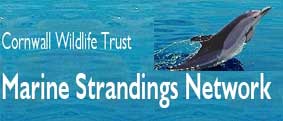
BMLSS
Oil Disasters page


